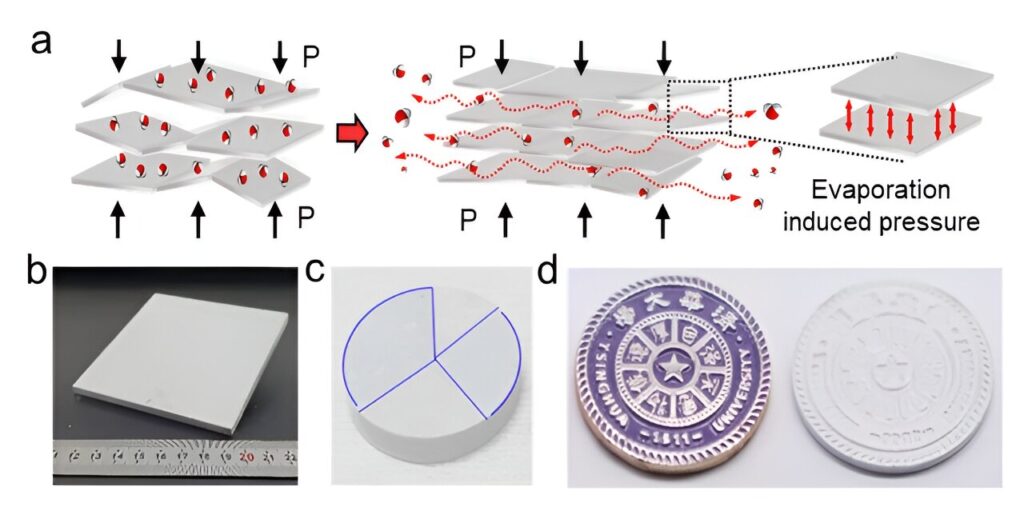Researchers have synthesized bulk van der Waals (vdW) materials at near-room temperature (ranging from room temperature to 60°C), significantly reducing the energy consumption required for their fabrication by at least one order of magnitude.
Bulk vdW materials are an important focus of research because they are held together by weak vdW forces instead of strong covalent or metallic bonds. The study is published in Nature Materials.
Previously, bulk vdW materials, such as graphite and hexagonal boron nitride, could only be synthesized at very high temperatures (>1,000°C). In this study, instead of directly sintering graphite or boron nitride particulates at such high temperatures, the particulates were exfoliated into two-dimensional (2D) nanosheets with very low energy consumption. Subsequently, a molding process at 45°C (or even at room temperature) was employed to transform these nanosheets into mechanically robust bulk vdW materials.
The method applies to a wide range of 2D materials, including MXene and transition metal dichalcogenides. Its low fabrication temperature also allows for surface imprinting and in-situ shaping, which are challenging with high-temperature sintering due to thermal-induced shrinkage and expansion. Additionally, the additive-free vdW materials facilitate high-temperature applications where 2D material-based polymeric composites fail.
This result mainly stems from the vdW interaction, providing the manufactured bulk materials with high mechanical strength. Activating the vdW interaction doesn’t require high temperatures but rather nanometer or sub-nanometer contact between adjacent nanosheets. The thinness and flexibility of the 2D nanosheets make them easily movable and deformable, facilitating intimate contact formation.
In addition, the researchers found that water adsorbed on the nanosheets is a powerful “sintering aid” that lubricates the nanosheets to give good alignment. The confined water then desorbs from the nanosheets and escapes from the material due to the nano-confinement effect, which closes the capillary, thus activating the vdW interaction and resulting in a densified, strong bulk vdW material.
“This process simplifies fabrication and reduces the high energy consumption associated with bulk vdW materials production, offering scalability, and it could also introduce innovative approaches to vdW material design, such as hybridizing various 2D materials, particularly those unstable at high processing temperatures,” said Prof. Su Yang, a researcher at the Shenzhen International Graduate School of Tsinghua University (SIAT) and corresponding author of the article.
“This study suggests the revolution to traditional material processing methods through nanomaterial utilization,” said Prof. Cheng Huiming from SIAT.
The team includes researchers from SIAT of the Chinese Academy of Sciences (CAS), the Shenzhen International Graduate School of Tsinghua University, the Institute of Metal Research of CAS, and the University of Science and Technology of China of CAS.


